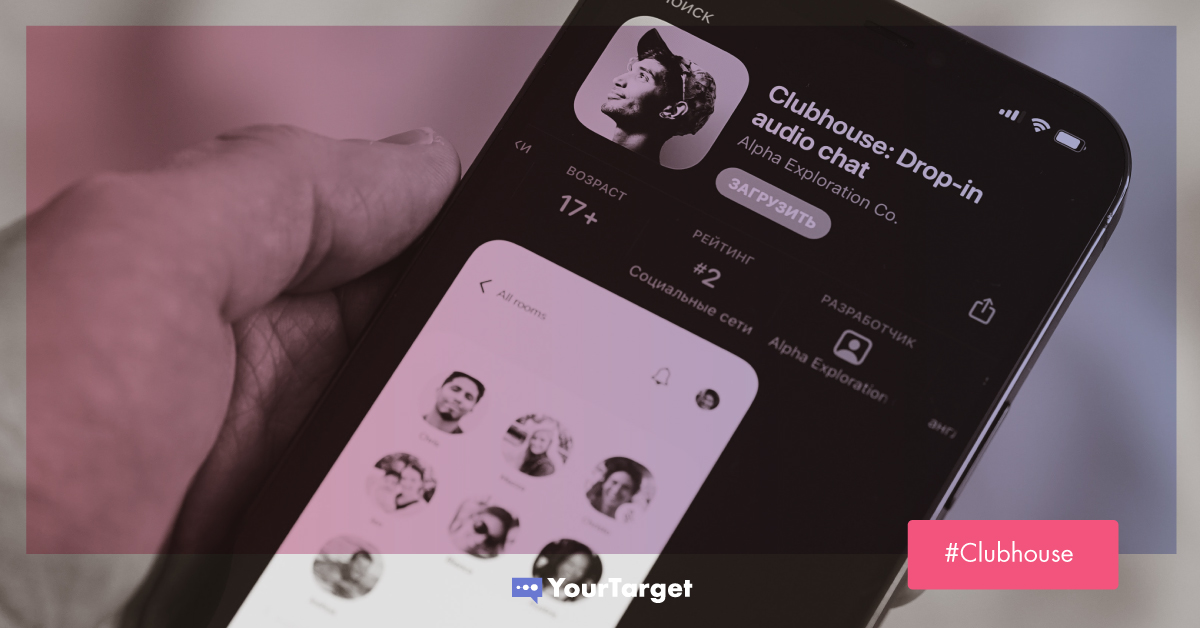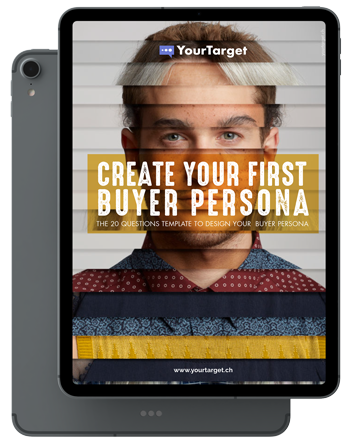If you’ve paid any attention to the media this year then you’ve probably heard of Clubhouse—the new social media sensation taking the internet by storm.
Clubhouse has grown rapidly since its release in early 2020, and its estimated worth in February 2021 was an impressive $1B. Currently the 16th most popular social media app in the App Store, Clubhouse is one to watch out for.
As it continues to grow in popularity, marketers everywhere are wondering whether or not Clubhouse is the next great marketing platform, or if it’s just a fad.
In this article, we’ll take a look at what Clubhouse is, how it works, and how your business can use it as a marketing tool.
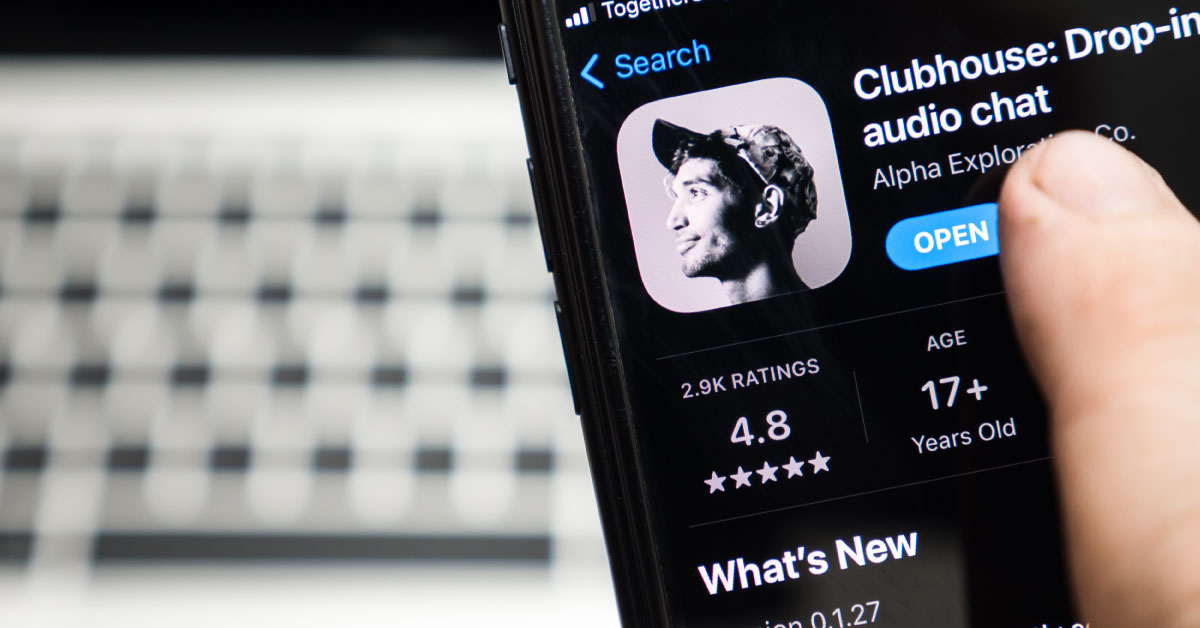
What is Clubhouse?
Clubhouse is an exclusive social media app that people can only join by invite. The app allows users to launch or join audio-only chat rooms, called “rooms”, with friends, followers, or other people using the app.
The app was launched in March 2020 straight out of Silicon Valley. Initially marketed to high-profile celebrities, influencers, and industry thought leaders—it’s recently become available to the general public.
The app exploded during the COVID-19 pandemic as people sought a respite from not being able to meet in person and working from home all day. Al Jazeera suggested Clubhouse thrives on the concept of FOMO (fear of missing out—just in case). Essentially, if you’re not online when a “room” is taking place, you’ll miss out.
Many of Clubhouse’s members are celebs including the likes of Oprah, Drake, and Joe Rogan. In December 2020, Clubhouse had just 600,000 users globally, since then that number has surpassed a whopping 10 million.
As accessibility to the app grows, it’s getting more and more coverage online and across news media outlets. As with any new social media platform, marketers are assessing whether or not they can use Clubhouse in their digital marketing strategies—and if it’s worth it.
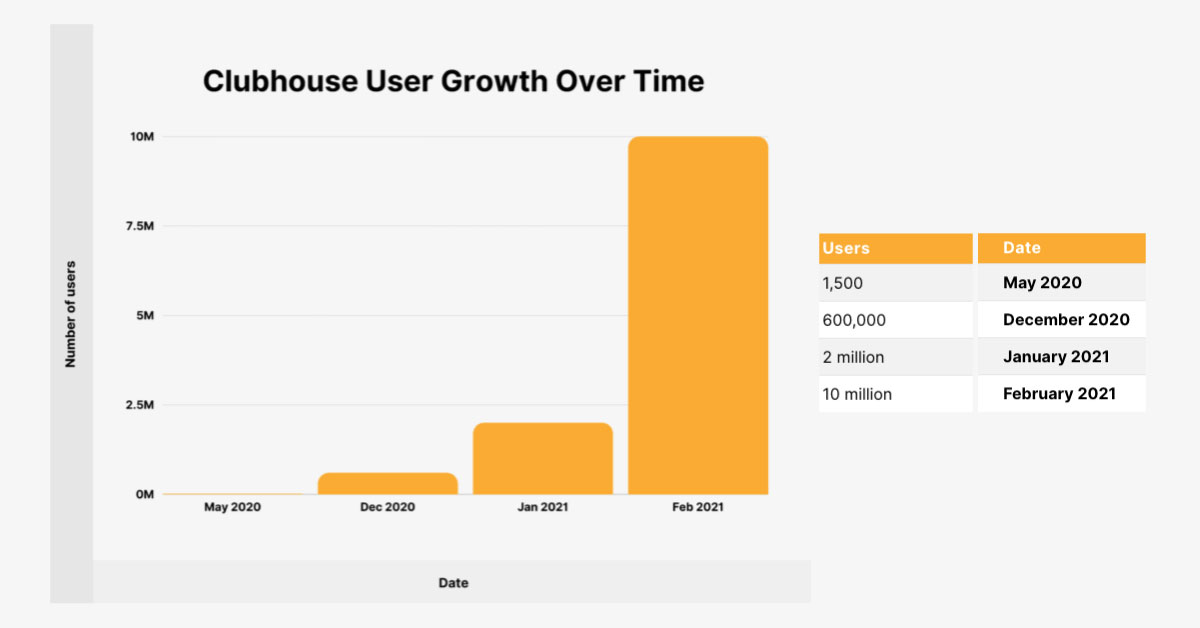
How does it work?
First of all, to join Clubhouse you need to be invited by a Clubhouse member. At first, the app was even more exclusive as it was only available to download on iPhone, but as of May 2021, there’s also an Android version.
Clubhouse is a place where users can meet, talk, and share ideas. To use the app, simply tap to join a room and start chatting with other people in the call. Clubhouse rooms are open, and you’re free to hop in and hop out as you please.
The app is audio-only, so you can’t share messages, pictures, or videos. If you want to say something you’ll need to “raise your hand”, then the speaker can invite you to take the mic. Clubhouse members can participate in discussions, interviews, and debates hosted by industry leaders, celebs, journalists, venture capitalists, and so on.
Think of using Clubhouse as tuning in to a live podcast. Just with a more exclusive audience!
Can Clubhouse be used for marketing purposes?
It’s time to address the question that’s got digital marketers everywhere sitting on the edge of their seats. Can Clubhouse be used for marketing in the same way as other popular social media platforms like Facebook, Instagram, or Twitter?
Although its full potential hasn’t yet been realized, there’s plenty of scope for Clubhouse to be used as a marketing tool. How to use it depends on your brand, business objectives, and what you want your campaigns to achieve.
Clubhouse is a great tool for brands to reach and expand their audience with niche thought leadership. Brands can establish a presence on Clubhouse to share their expertise and value to an audience that wants to listen. Because Clubhouse is all about having open, authentic discussions, it’s an effective way for brands to connect with audiences on a human level.
So, the answer to that all-important question is an enthusiastic yes. Clubhouse provides a platform for brands to share their insight, boost brand awareness, and establish a community of highly engaged and active listeners. For marketers, this means hosting discussions, Q&As, and other virtual events to reach a refined audience.
This isn’t something that can happen overnight. Building brand awareness through Clubhouse takes a lot of time, energy, and marketing expertise. With the right tactics, tools, and attitude there’s no reason why Clubhouse can’t be just as effective a marketing tool as more established social media platforms.
How to run a marketing campaign using Clubhouse
If Clubhouse goes the same way as other social media platforms, it’s safe to say we can expect some form of advertising to be introduced in the future. Right now though, there’s a lot of value to be found in creating engaging campaigns aimed at exhibiting your brand’s expertise and using Clubhouse as a vehicle to engage your audience.
Creating rooms of your own on the Clubhouse app will allow you to showcase your expertise to a community of engaged followers who are interested in what your business has to say and offer. The first, perhaps most challenging hurdle, you’re likely to encounter is actually creating an account in the first place! Assuming you’ve accessed an invite, here’s a look at how to use Clubhouse as part of your next marketing campaign.
1. Optimize your profile and bio
The first step in using Clubhouse for marketing is to build and optimize your profile.
This is your chance to show the world (of Clubhouse members) exactly who you are. What you choose to include in your Clubhouse bio will help users to find you in the user directory, so be sure to include keywords that apply to your brand, your vision, and what you can offer.
Creating a great clubhouse bio requires you to invest some time in selecting the right information and keywords that’ll get you noticed. Feel free to use emojis to help you stand out!
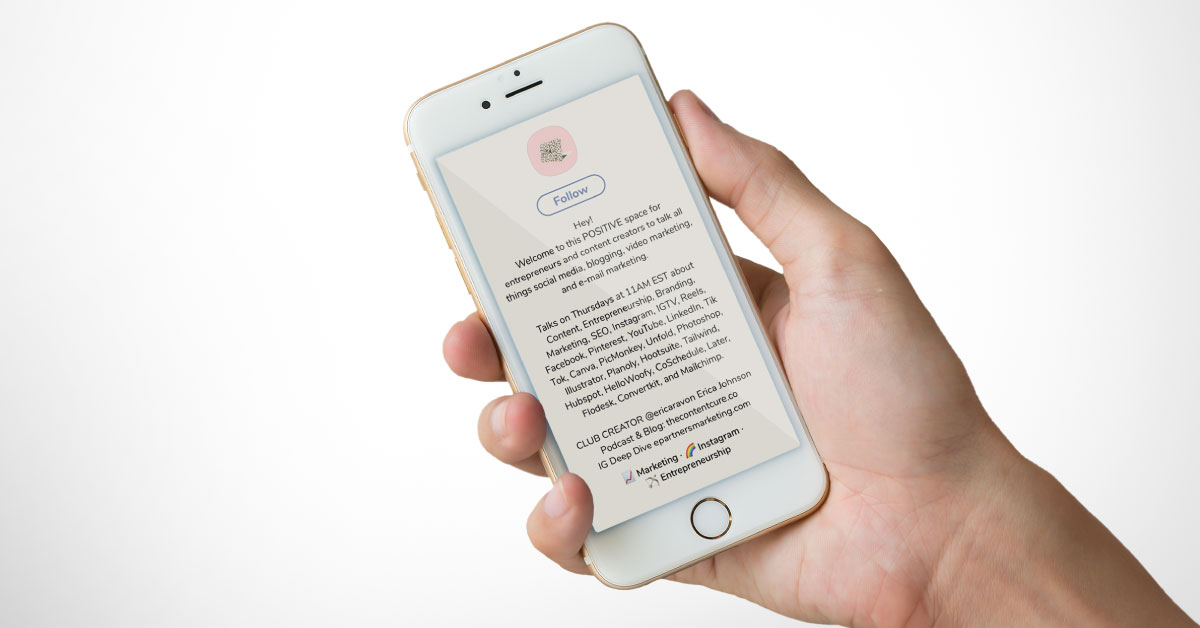
2. Find and follow relevant people, rooms, and clubs
Next, you’ll need to find the right people, rooms, and clubs to follow. Be strategic when choosing who to follow, as you’ll want to ensure your Clubhouse hallway matches your interests.
If you’re new to Clubhouse, you’ll find a list of trending people and rooms when you open the app based on contacts in your phone directory. You can also browse the member directory, club directory, and event calendar by searching for keywords related to your interests.
Once you find people, clubs, and events of interest you can check out who else is attending the event to find users with similar interests or businesses operating in a similar niche to yours.
You can also look at the people already in a room to see a breakdown of who else is listening around you. A clubhouse room is broken into three categories:
- The stage: The people speaking to the audience.
- Front row: People attending who know the speakers.
- Audience: Other listeners in the room.
When you click on the profiles of these people you can access information about them. Then you can decide to follow them based on their interests to build a network of connections within the Clubhouse app.
Building this network is an important part of using Clubhouse for marketing. Just like you’d do your research to find your target audience for any other type of marketing campaign, you need to do the same with Clubhouse. Find the right audience of people whose interests align with your brand’s vision, and who will actively listen to what you have to say.
Of course, it’s not just enough to follow members in the hopes that it draws in new leads. You’ll need to get to know the people in your niche by keeping a close eye on what they’re talking about. The more active you become, the more you show up.
When you show up, you can raise your hand to ask questions or share insight, and the hosts can invite on on the stage. Being on stage is your chance to get noticed. Be sure to use your talking time wisely. Don’t ramble or go off-topic, simply answer questions insightfully and succinctly to reflect your expertise. This will help you to build authority in your field, boost brand awareness, and attract followers to your profile.
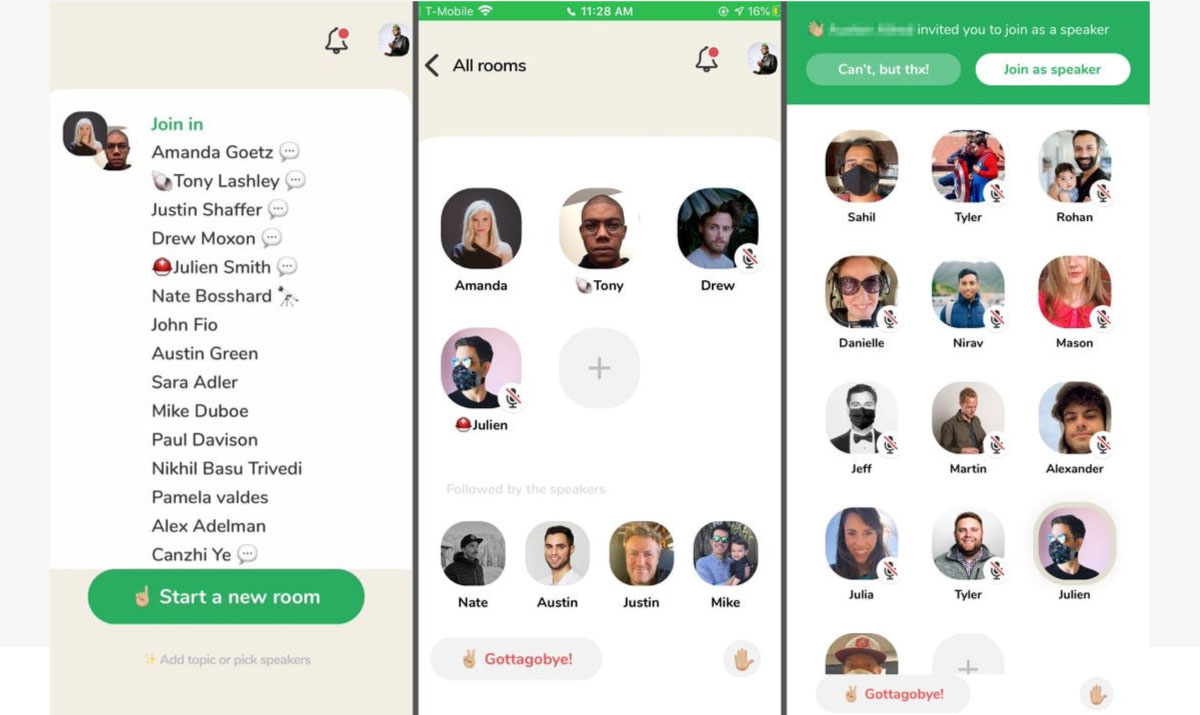
3. Start hosting your own rooms
Once you’ve built up a network of followers, you can start thinking about hosting your own rooms. When you create a room within the app, you’ll be the moderator of that room, meaning you can control who to invite on stage, who to mute, and more.
Creating your own room puts you in complete control of the content and what happens inside. When planning what you’re going to talk about, social listening is key. Listen to what leaders in your industry are saying, and hone in on consumer and social trends to stay relevant. There are many ways you can use your Clubhouse rooms as a marketing tool to attract your audience. Here are a few ideas:
- Invite industry experts to your room and have them discuss topics related to your niche.
- Ask for feedback on your business. For example, if you’re releasing a new product or service, why not pitch it to the room and see what they think? You’ll be surprised at who might show up!
- Host Q&A sessions or panels where participants can actively engage with your brand representatives.
- Encourage your leaders, employees, and other brand representatives to raise their hands and participate in the conversation.
- Sponsor rooms as a brand. Although your brand might not be the topic of conversation, your brand will be mentioned as the sponsor.
Once the room is in full swing, you’ll want to ensure the event is structured, ordered, and provides the audience with something valuable to take away. Consider taking short breaks and giving the audience a chance to ask questions by inviting them to the stage.
Remember, Clubhouse is about creating open dialogues between industry leaders and audience members—so focus on establishing a connection with your audience.
Note that some things need to happen before you create and schedule a room.
There’s no point in organizing an event if you haven’t networked and attracted a following. If there’s no audience, you might as well spend your time on other campaigns with a wider reach. Also, be sure to schedule your room well in advance so you and your followers can promote it.
Final thoughts
Although it’s still open to a relatively exclusive audience, Clubhouse is a rapidly growing social media platform that we’re likely to see a lot more of in the coming years. Despite its limitations, Clubhouse’s exclusivity is just as much an advantage as it is a challenge.
Unlike other social media platforms, Clubhouse is about establishing authentic human connections between businesses and their audiences. Start building your Clubhouse following now to stay ahead of the crowd, boost brand awareness, and engage with your audience. Oh, and remember to be human.
